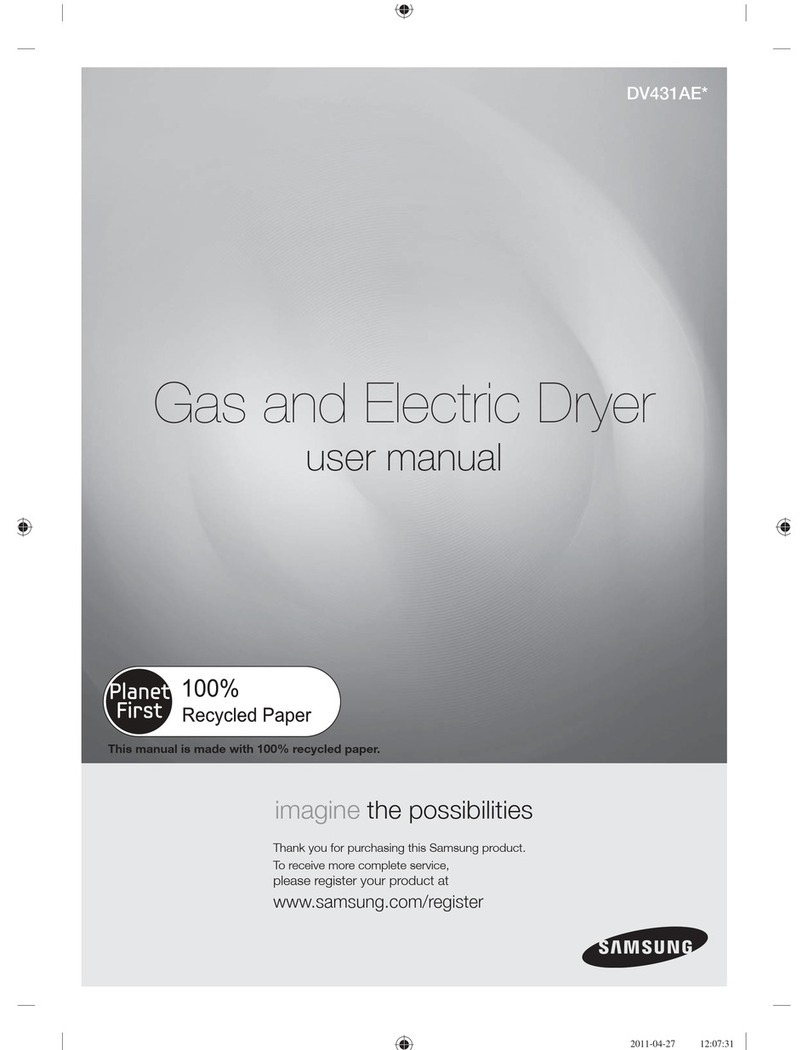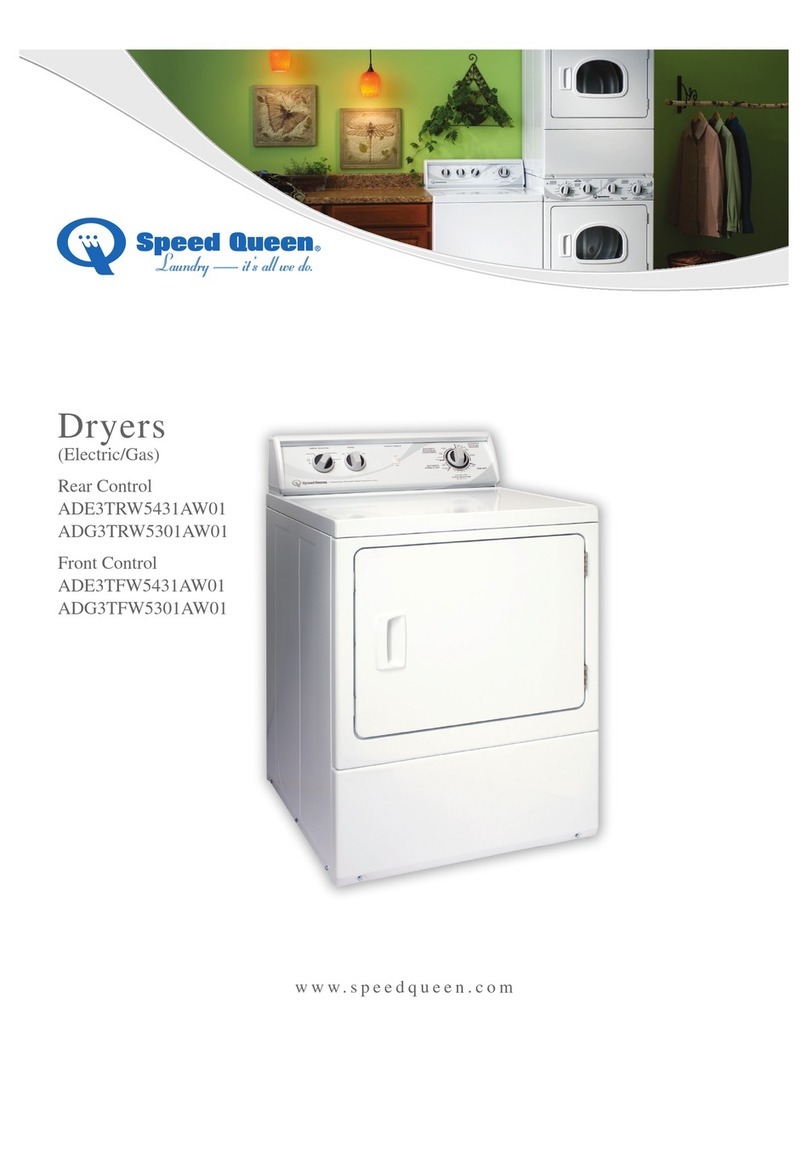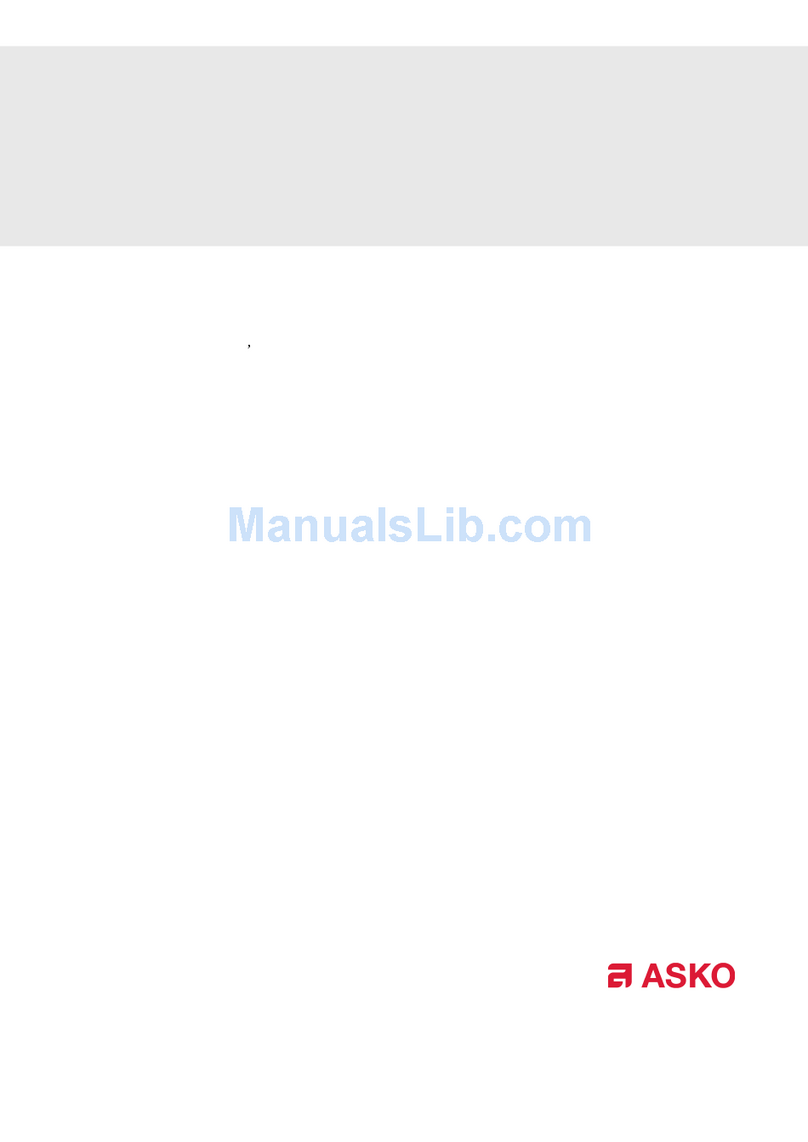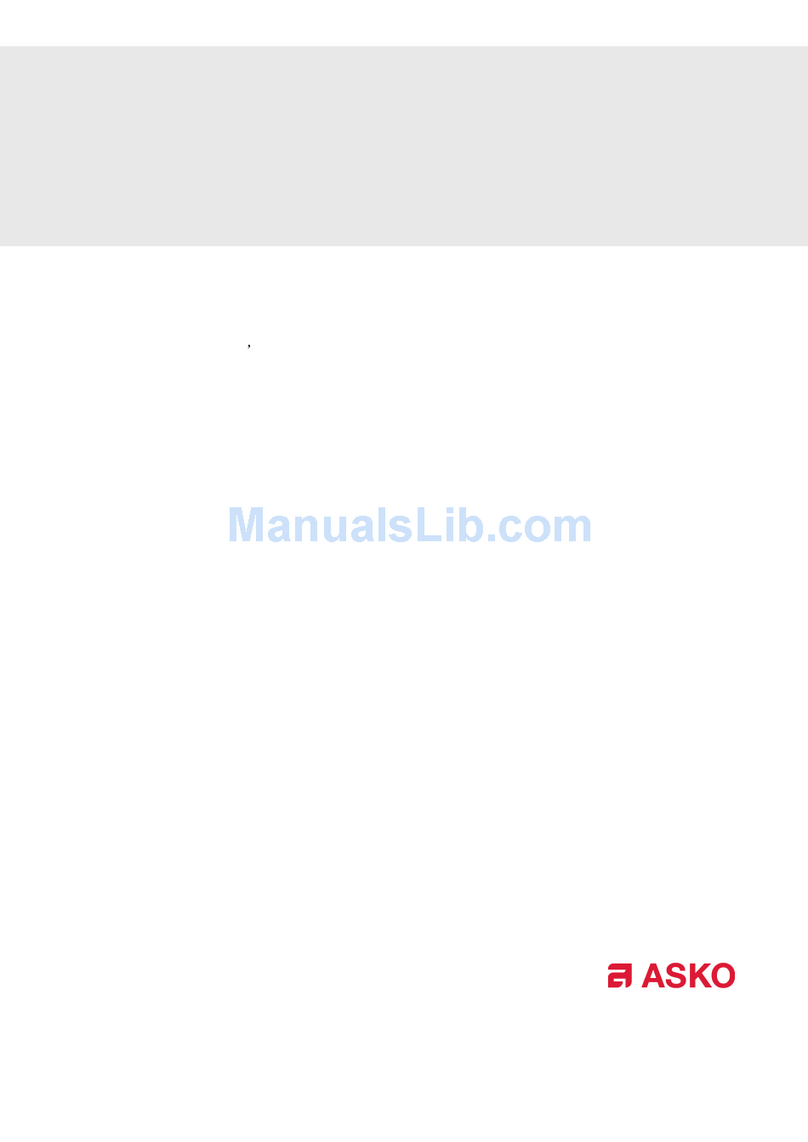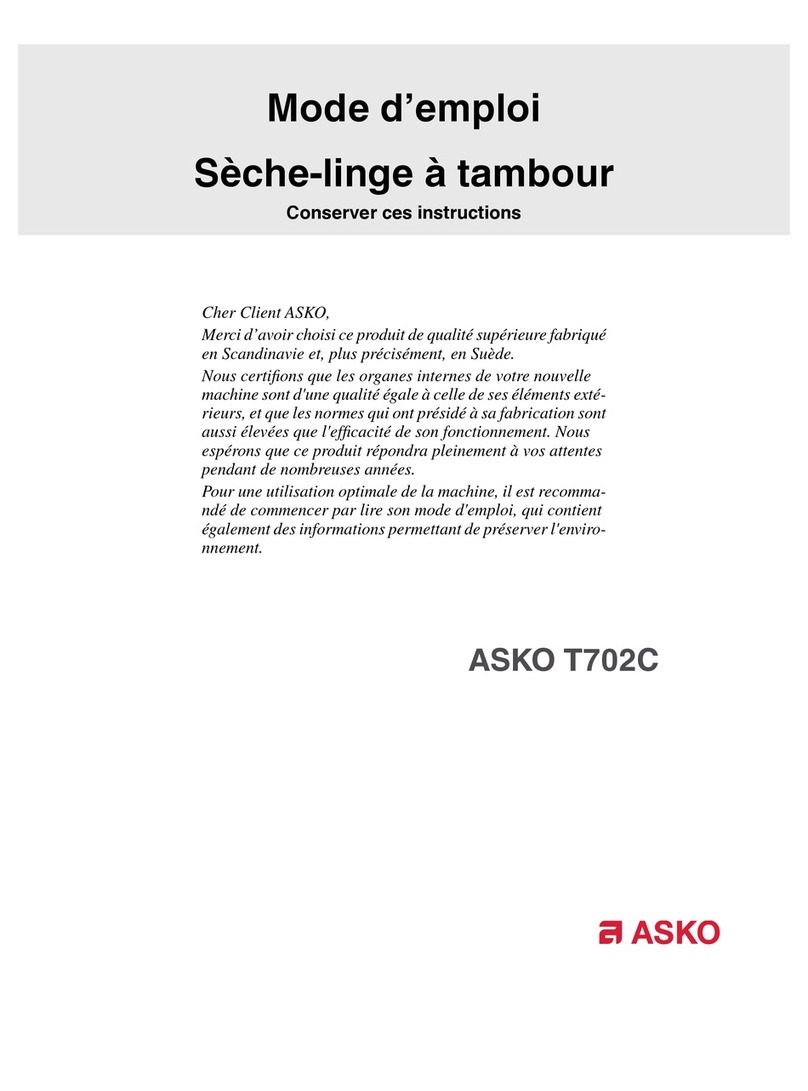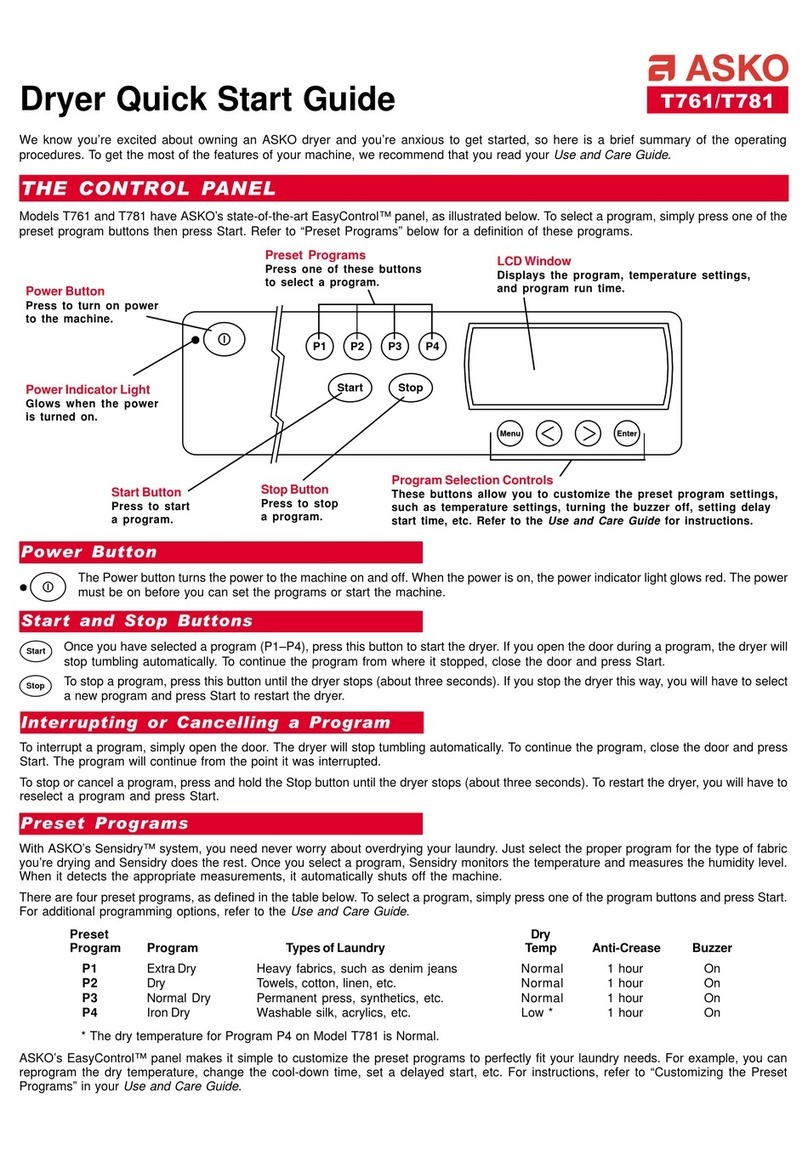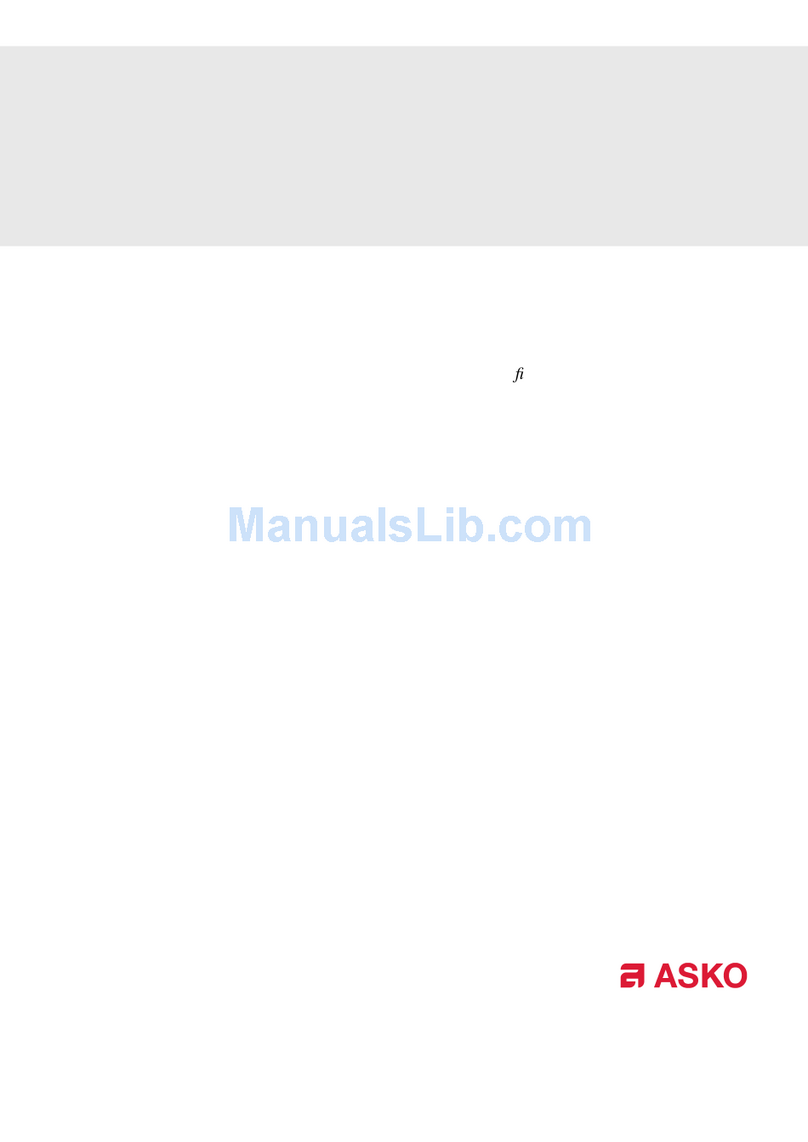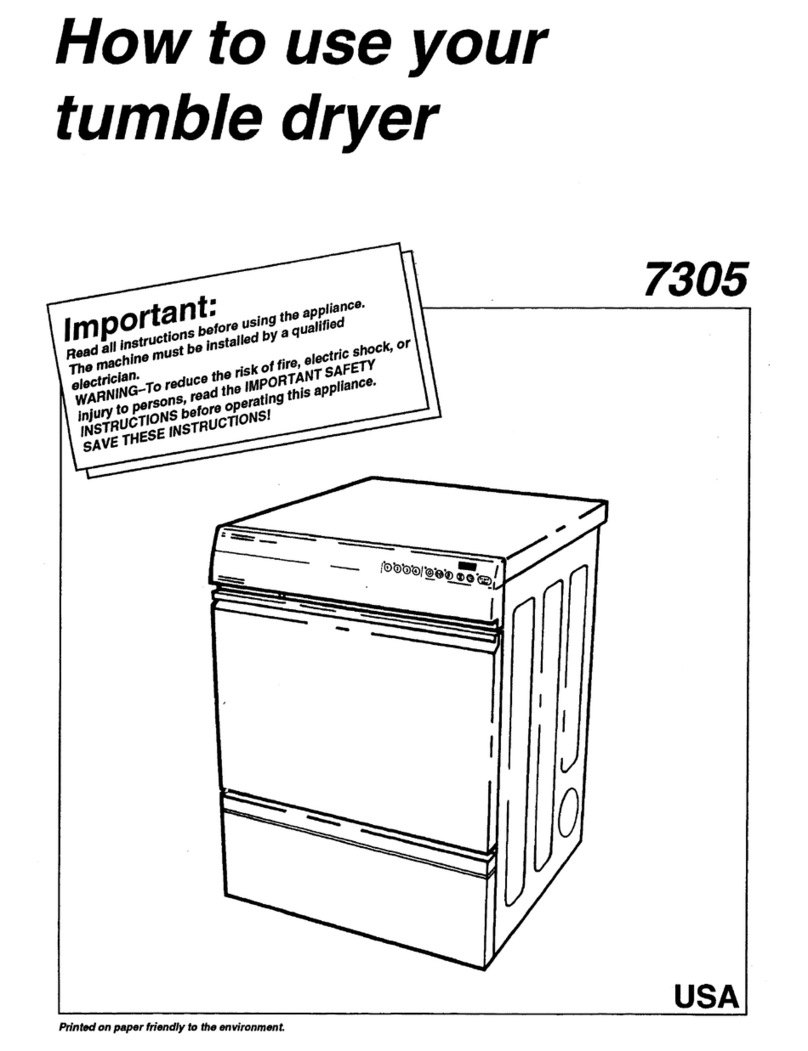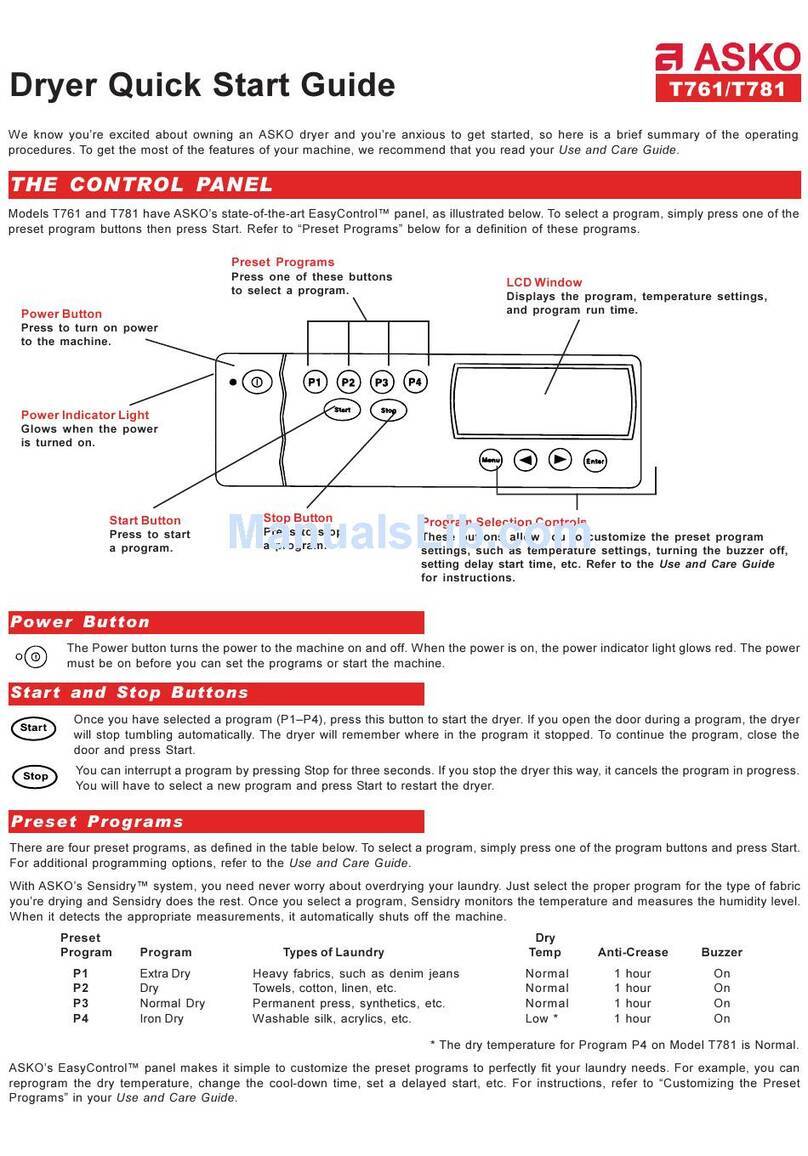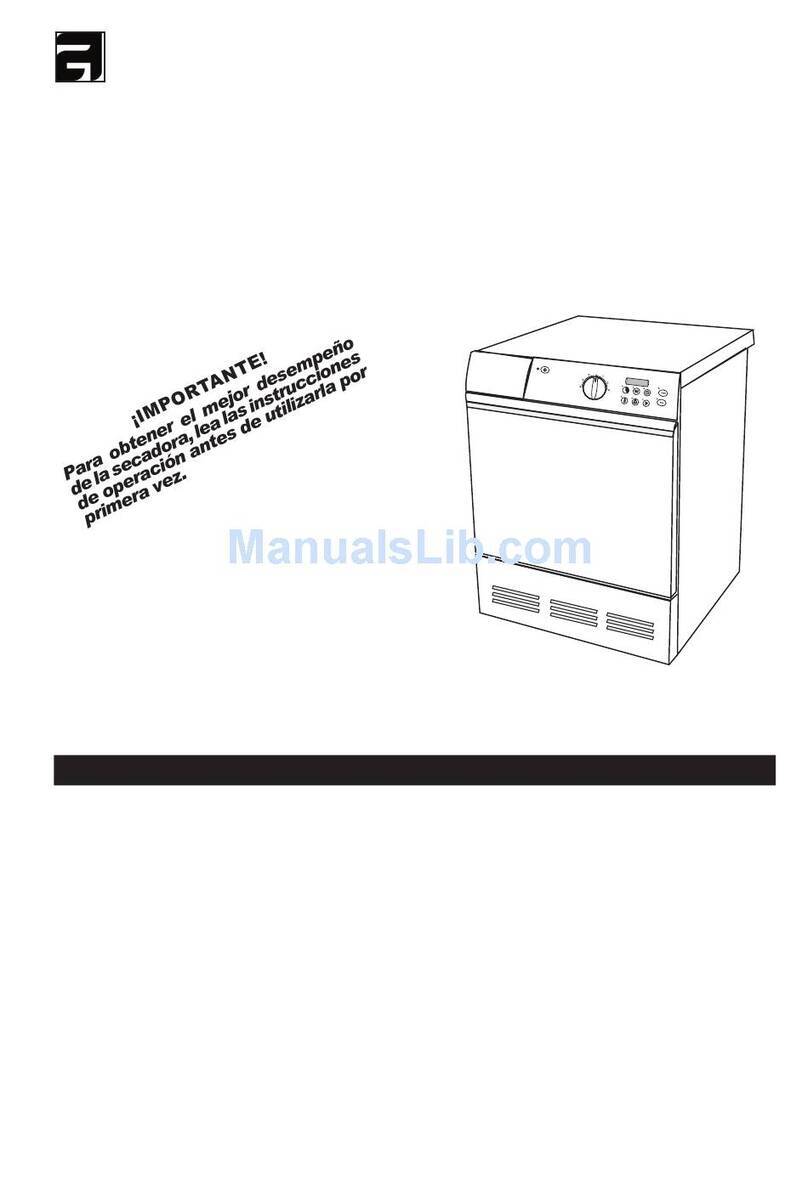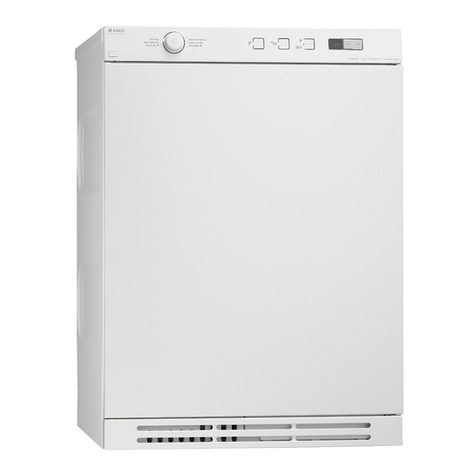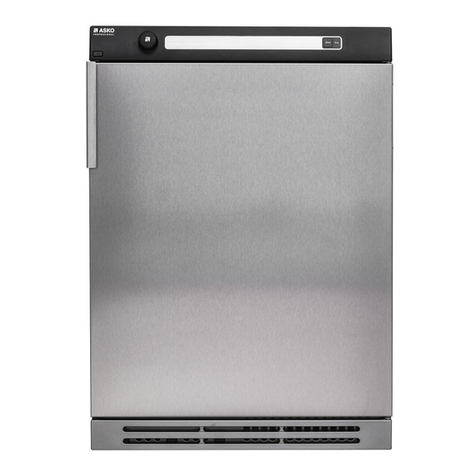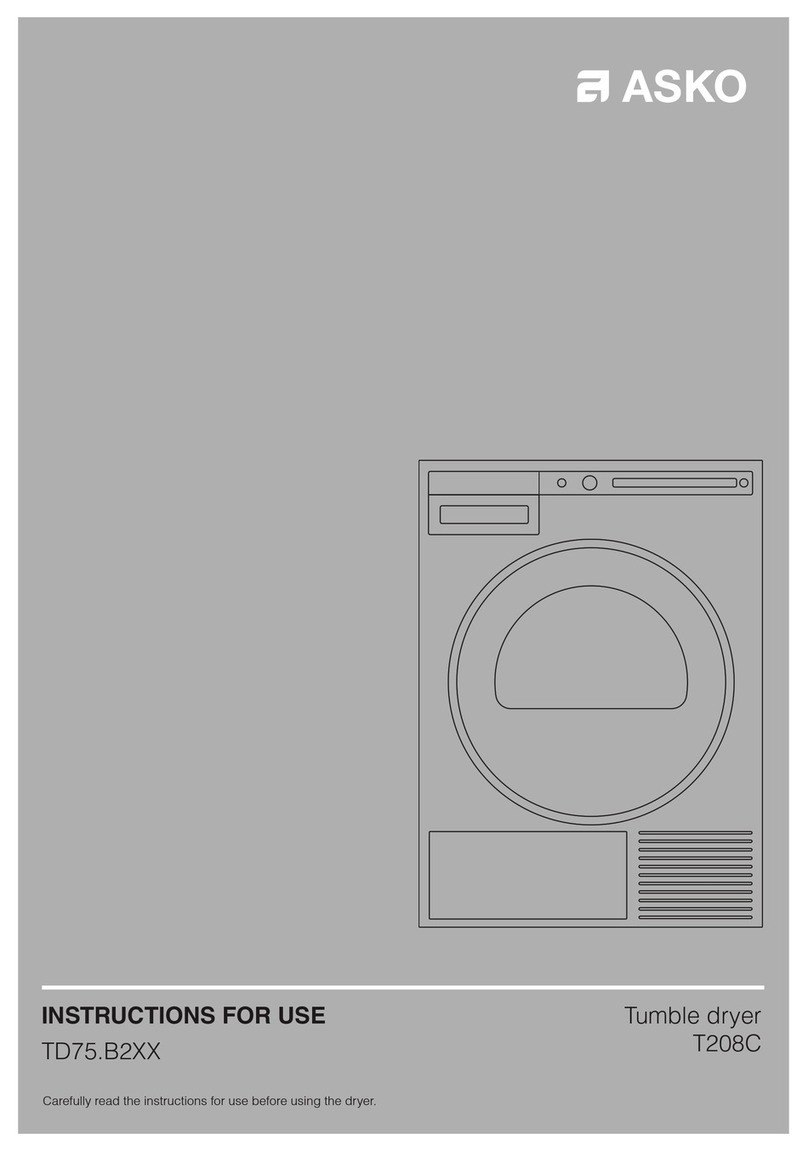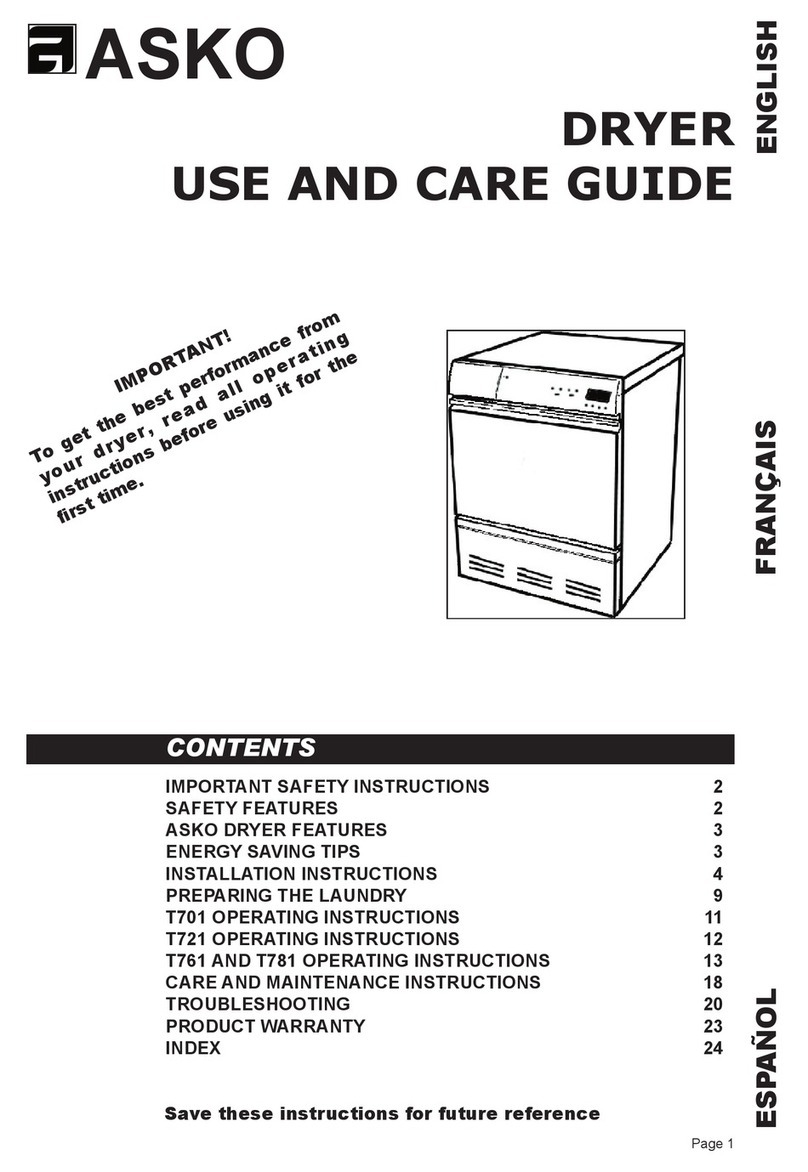Page 6
The machine wont start.
¨Make sure the door is closed securely
¨Make sure the Power is turned on
¨Check that you set the program or time correctly
¨Check that the electric plug is securely in the
socket
¨Check the house breaker/fuses and the fuses on
the back of the dryer
¨If all of the above options are eliminated, the
overheat protection has probably been activated
(See below )
The machine starts but it stops when
I release the power button.
¨The overheating protection has probably activated
Clean the lint filter and let the machine cool down
before trying again (See below )
The machine takes too long to dry
my laundry.
¨Check that the lint filter is clean
¨If you use dryer sheets (not recommended), you
may need to wash the lint filter with warm water
and a soft brush to clean any blocked holes
¨Be careful not to overload the dryer because the
warm air needs sufficient room to circulate properly
TROUBLESHOOTING
and the clothes need room to tumble freely
¨The laundry should only be damp when it comes
out of the washer If it seems too wet, try using a
faster or longer spin cycle
¨Make sure the outside vent exhaust is not blocked
My clothes are coming out wrinkled.
¨You should remove the clothes as soon as the
dryer signals the end of the cycle If you cant remove
the clothes right away, use the Anti-crease option
¨Dry heavy fabrics together and light fabrics together
¨Dry only permanent press items together
¨Dry in smaller loads
¨Use slower spin speeds
¨Use fabric softener in the rinse program
¨You may be using the wrong wash temperature
Try using a lower wash temperature, especially
for permanent press and delicate items
The motor is running but the drum
isnt turning.
¨This usually means a belt is broken Call a servicer
The machine makes a funny noise.
¨A slight rumbling may be heard when you first turn
on the dryer This is normal and it should only last
a few seconds
¨Dry consecutive loads to avoid reheating the dryer
¨Do not overload the dryer
¨Use the highest spin speeds allowed for the
garments
¨Do not put extremely wet clothes into the dryer
ENERGY SAVING TIPS
If you experience a problem with your dryer, you should
review the following list of frequently encountered
situations It could save you the cost and inconvenience
of a service call
Even though the product is under warranty, if the problem
is not caused by defective product workmanship or
materials, you will be charged for a service call Refer
to page 15 to determine what is and is not covered
under your warranty If youre still not sure, contact the
ASKO Advisory Center before you call a serviceman
¨Dry like fabrics together (i e , heavy fabrics together,
light fabrics together)
¨Clean the lint filter after each load
¨Do not overdry clothes when using the timed program
¨Spin the clothes at no less than 800 rpm
OVERHEAT PROTECTION
ASKO dryers are designed with an overheat protection
switch that automatically turns off the machine if the
temperature is too high This could happen if the lint
filter or exhaust hose becomes clogged with dust
Should the machine turn itself off because of
overheating, make sure the lint filter and exhaust hose
and vent duct are clean
If the overheat protection switch is activated, you have
to reset it before the machine will run To do this, press
the reset button (rubber disk) on the back of the
machine, as illustrated to the right You should hear a
click when it engages The machine will not start until it
has cooled sufficiently
If your dryer overheats frequently, it may not be
vented properly or the room in which it is located
may not have sufficient air circulation Contact
an installer to have these issues checked out
NOTE:
Press the reset
button to start the
machine.










